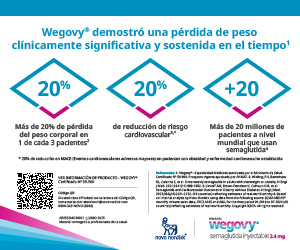Symposium: New horizons in the treatment of type 1 diabetes mellitus. Automated insulin infusers: bomechanical artificial pancreas?
DOI:
https://doi.org/10.47196/diab.v55i3Sup.509Keywords:
automated insulin infusers, type 1 diabetesAbstract
The exponential increase in the prevalence of diabetes mellitus (DM) throughout the world also includes the increase in people with type 1 diabetes (T1D)1. This disease is characterized by the autoimmune and progressive destruction of pancreatic Beta cells, causing an endogenous insulin insufficiency and hyperglycemia that can only be controlled by exogenous insulin administration.
Intensive insulinization with multiple doses of insulin is the best therapeutic option to blood glucose control and achieve glycosylated hemoglobin A1c goals, with the least number of hypoglycemia and risk of chronic complications. This requires an active and frequent participation of the patient with T1D and that could be a barrier to achieve optimal control in the medium term.
In pursuit of these objectives, the technological therapeutic growth for T1D has been broad and fast, through the development of continuous glucose sensors (continuous glucose monitor, CGM) and subcutaneous insulin infusion pumps (continuous subcutaneous insulin infusion, CSII). Since its approval, the use of automated insulin administration systems (2017) by adolescent adults and children with T1D has shown to be effective and safe to achieve adequate glycemic control in nighttime or basal conditions. Automatic insulin infusion (IAI) or closed loop (CL) requires the use of CSII and CGM communicated with each other (by Bluetooth) and functionally integrated through control algorithms that regulate the administration of insulin according to subcutaneous glucose bringing blood glucose to the desired ranges for the patient. These algorithms are hosted on different platforms, such as a pump infuser or cell phone, or remotely (Do It Yourself or DIY) and from there they control the insulin infusion according to the subcutaneous glucose, automatically. CL systems can be monohormonal (insulin only) or bihormonal (insulin and glucagon) and depending on whether or not they require the participation of the patient in the programming of the pre-meal insulin bolus, they are called hybrids (Hybrid Closed Loop, HCL) or fully automatic (Fully Self-closing loop, FCL), respectively.
While the evidence observed on glycemic control with these HCL systems is encouraging, users continue to experience the burden of carbohydrate counting for boluses of pre-meal insulin. Patients with poor metabolic control due to skipping or delaying the administration of boluses of food would benefit from FCL. These FCL algorithms monitor prandial blood glucose without requiring a meal announcement and rapidly anticipate and predictively detect changes in blood glucose based on carbohydrate load, alleviating the daily load of carbohydrate calculation for patients with T1D. Few consortiums in the world are advancing with the difficult challenge that the validation of these FCL algorithms implies, one of them is in Argentina (automatic regulator of glucose, ARG) and that would allow to achieve an adequate metabolic control with the best quality of life.
References
I. Diabetes Control and Complications Trial/Epidemilogy of Diabetes Interventions and Complications (DCCT/EDIC) Study. Research Group. New England Journal of Medicine 2005; 353:2643-2653.
II. Garg SK, et al. Glucose outcomes with the in-home use of a hybrid closed-loop insulin delivery system in adolescents and adults with type 1 diabetes. Diabetes Technol Ther 2017; 1;19(3):155-163.
III. Grunberger G, et al. Amercan Association of Clinical Endocrinology Clinical Practice Guideline: The use of advanced technology in the management of persons with diabetes mellitus. Endocrine Practice 2021; 27:505-537.
IV. Sánchez-Peña R, Colmegna P, Garelli F, Grosembacher L. Artificial pancreas: clinical study in Latin America without premeal insulin boluses. Journal of Diabetes Science and Technology 2018; 12(5), 914-925.
Downloads
Published
Issue
Section
License
Copyright (c) 2021 on behalf of the authors. Reproduction rights: Argentine Diabetes Society.

This work is licensed under a Creative Commons Attribution-NonCommercial-NoDerivatives 4.0 International License.
Dirección Nacional de Derecho de Autor, Exp. N° 5.333.129. Instituto Nacional de la Propiedad Industrial, Marca «Revista de la Sociedad Argentina de Diabetes - Asociación Civil» N° de concesión 2.605.405 y N° de disposición 1.404/13.
La Revista de la SAD está licenciada bajo Licencia Creative Commons Atribución – No Comercial – Sin Obra Derivada 4.0 Internacional.
Por otra parte, la Revista SAD permite que los autores mantengan los derechos de autor sin restricciones.




























